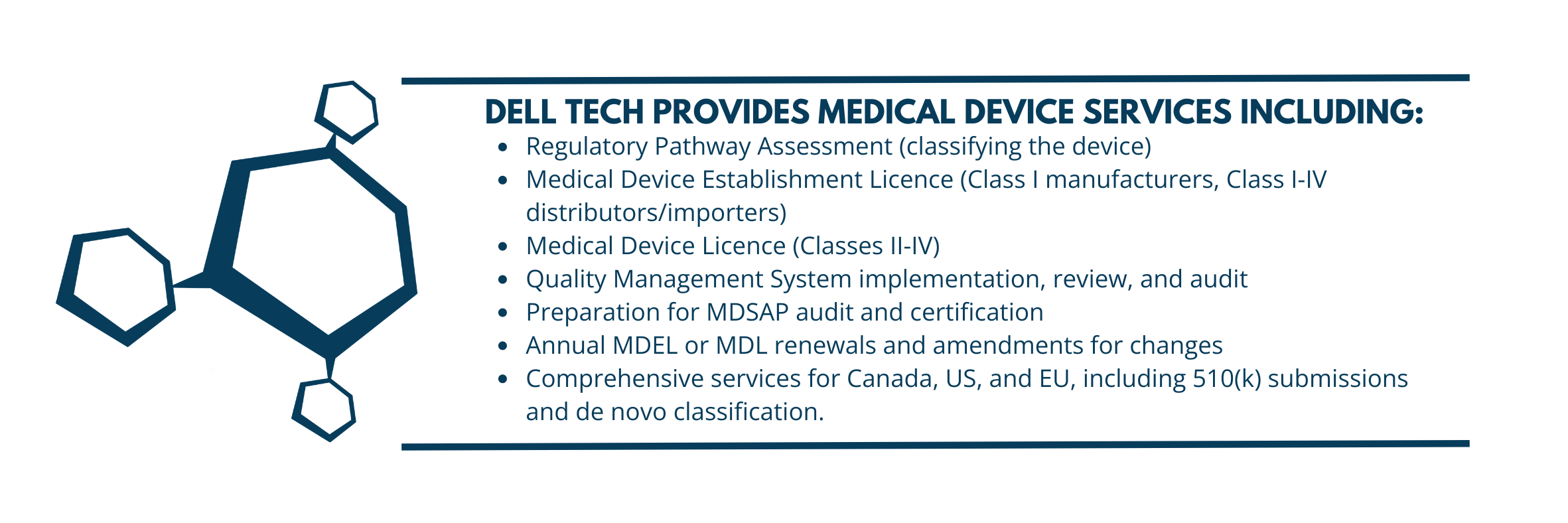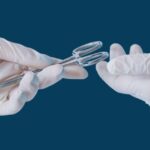Medical Devices Canada | Regulatory Overview
By: By: Ivy Tang, PRINCIPAL REGULATORY CONSULTANT, email
Introduction to Medical Devices in Canada
Medical devices are defined in the Food and Drugs Act as health or medical instruments used for the treatment, mitigation, diagnosis, or prevention of diseases or abnormal physical conditions. This definition encompasses a broad spectrum of devices, including medical instruments, equipment, and implants. Examples range from complex machinery like x-ray machines and pacemakers to everyday items such as dental floss, eyeglasses, catheters, and even software designed to process medical images for detecting conditions like breast cancer.
To sell a medical device in Canada, it must undergo a thorough approval and licensing process. This ensures that each device meets stringent safety, effectiveness, and quality standards. The regulatory framework in Canada is designed to protect public health, ensuring that only devices that have been rigorously tested and verified are available to healthcare providers and patients.
Health Canada’s Role in Medical Devices Regulations
Health Canada reviews and regulates medical devices to ensure their safety, effectiveness, and quality, protecting the health and safety of Canadians. Canada’s Medical Devices Program consists of two main branches: the Health Products and Food Branch (HPFB) and the Regulatory Operations and Enforcement Branch (ROEB). The Medical Devices Directorate, part of the HPFB, is responsible for licensing devices and evaluating safety risks after they are on the market. Meanwhile, the Medical Device and Clinical Compliance Directorate, under ROEB, oversees device recalls, inspections, establishment licensing, and compliance enforcement.
Medical Device Licensing and Registration
Health Canada regulates medical devices through two key designations: the Medical Device Licence (MDL) and the Medical Device Establishment Licence (MDEL). The MDL is necessary for the sale of specific medical devices and is required for medical device manufacturers of Class II, III, and IV devices. This process includes a review of the device’s labelling, clinical data (if applicable), and quality management system to ensure safety and effectiveness. The MDL is issued for individual devices.
In contrast, the MDEL is required for companies involved in the distribution and importation of medical devices, ensuring that the establishment meets regulatory quality management standards. The MDEL process requires compliance with good manufacturing practices (GMP) and regulatory standards but does not involve a review of the actual device. Unlike the MDL, the MDEL is granted to the establishment as a whole, allowing it to distribute multiple devices under one licence.
Quality System Requirements
Under the Medical Devices Regulations, manufacturers of Class II, III, and IV medical devices must have a valid ISO 13485 certificate to meet Quality Management System (QMS) requirements. Previously, the QMS framework was governed by the Canadian Medical Device Conformity Assessment System (CMDCAS). However, this system was replaced in 2019 by the Medical Device Single Audit Program (MDSAP), which allows a single audit to fulfill regulatory requirements in Canada, the U.S., Brazil, Australia, and Japan. Within the MDSAP framework, recognized Auditing Organizations conduct QMS audits and grant MDSAP certification. This certification is necessary for manufacturers to access the Canadian market.

Regulatory Framework for Medical Devices
Health Canada classifies medical devices into four classes (I, II, III, and IV) based on the level of risk they pose to patients and users:
Class I medical devices: These are low-risk devices, such as bandages, eyeglasses, and manual wheelchairs. A device licence is not required for Class I devices, but manufacturers must apply for a Medical Device Establishment Licence (MDEL) and adhere to Good Manufacturing Practices (GMP).
Class II medical devices: These devices present moderate risk and include items like short-term catheters and infusion pumps. Manufacturers must obtain a Medical Device Licence (MDL) and hold MDSAP certification, which ensures compliance with international quality standards.
Class III medical devices: These are high-risk devices, such as pancreatic stents and intrauterine devices (IUDs). Manufacturers of Class III devices are required to submit a comprehensive MDL application that includes detailed safety and effectiveness data, often requiring clinical evidence.
Class IV medical devices: These devices carry the highest risk and include items like implantable pacemakers and certain advanced diagnostic imaging equipment. The licensing process for Class IV devices is the most rigorous, necessitating extensive clinical data, thorough risk assessments, and detailed information about the manufacturing process.
Unique Device Identification (UDI) System
A Unique Device Identifier (UDI) is a series of numeric or alphanumeric characters assigned to a specific medical device to facilitate its tracing and tracking throughout the healthcare system. According to guidance from the International Medical Device Regulators Forum (IMDRF), each UDI must be unique and based on global standards. The UDI must be applied to the label of the medical device and its packaging, and relevant information must be entered into a publicly accessible UDI database for regulatory authorities.
The advantages of a UDI system include more accurate reporting in the event of a recall, enabling patients to track their own devices, reducing counterfeiting, and minimizing medical errors by allowing healthcare professionals to precisely identify devices.
The U.S., EU, and Australia are at various stages of implementing a UDI system, while Health Canada has been considering implementation since 2017, though it remains under review.
Medical Devices for Urgent Public Health Needs
In January 2024, the Regulations Amending the Medical Device Regulations (Medical Devices for an Urgent Public Health Need) were published in the Canada Gazette. These amended regulations expand the scope of the Medical Device Regulations beyond COVID-19 to cover any medical conditions that pose a significant risk to Canadian public health and require immediate action.
As a result, there is now an expedited regulatory pathway for unlicensed devices listed under the Urgent Public Health Need (UPHN) List. Additionally, there are expanded use indications for existing devices, and devices on the UPHN list can leverage the authorization of a device from another recognized regulatory agency.
Amendments to Medical Device Regulations
Regulatory amendments to the recall framework and Medical Device Establishment Licences (MDELs) were published and registered in June 2024. Key points include a 24-hour notification requirement for recalled products, the removal of low-risk recalls to reduce the burden on the industry, and the introduction of terms and conditions on MDELs to mitigate health and safety risks. Additionally, inspections of MDEL holders will be strengthened by integrating hybrid and remote inspections with on-site assessments. The second phase of this amendment, aimed at improving and modernizing the regulatory oversight of the medical supply chain in Canada, will feature a public and stakeholder comment period in Winter/Spring 2025.
IV Medical Devices: Special Considerations
Class IV medical devices in Canada face the most stringent licensing requirements. In addition to standard administrative application materials—such as the application form, fee form, labelling, and MDSAP certificate—applicants must submit any pre-submission correspondence with Health Canada. The following documents may also be required:
- A cover letter summarizing the scientific content supporting the application
- A description of the device’s design philosophy
- A summary of Canadian and international marketing history, including incident reports and recalls
- Details of material specifications, especially if the device contains biological materials or derivatives, such as animal tissue, human tissue, or fermentation products
- Process validation studies, sterilization validation, and residual toxicity studies
- Preclinical studies, software verification and validation, biocompatibility studies, and clinical evidence
Additionally, paper applications must adhere to specific formatting guidelines regarding organization, margins, fonts, and bibliographies.
Conclusion
Health Canada’s medical device regulatory pathway is designed to ensure the safety, effectiveness, and quality of medical devices available in Canada. By establishing a clear framework that includes classification, licensing requirements, and post-market surveillance, Health Canada promotes innovation while safeguarding public health. The pathway facilitates timely access to critical medical technologies, particularly during urgent public health needs, while maintaining rigorous standards to protect patients and users. This balanced approach fosters trust in medical devices and supports the advancement of healthcare in Canada. Contact Dell Tech today to licence your device or establishment and bring your products to market.





